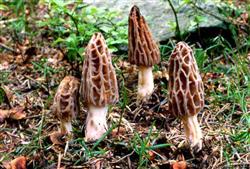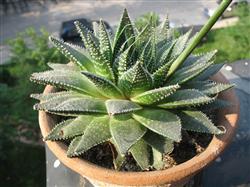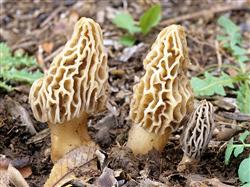Morchella planting technique: can Morchella be planted under the forest?

Can you grow Morchella under the forest? When will it be ready to plant? What about the planting method? Please introduce that Morchella can grow under poplar, birch or broad-leaved mixed forest, so Morchella can be planted under the forest. When Morchella is planted under the forest, the coniferous and broad-leaved forest dominated by poplar or birch should be selected, the canopy density of the stand should be more than 0.7, and the humus soil should be loose, thick and moist. The optimum temperature for the growth of Morchella mycelium was 18-25 ℃. The temperature difference between day and night is large, and the temperature between 4 and 16 ℃ in the forest is beneficial to the formation of fruiting body. Morchella is suitable to grow in a moist soil environment. When a large number of fruiting bodies occur, the soil water content is 50%-60%, and the air relative humidity is 80%-90%. The formula of original Morchella culture medium was as follows: potato 200g, glucose 20g, Agar 20g, vitamin B11g, water 1000 ml. Production method: boil potatoes in boiling water for 30 minutes and take juice. Add glucose, Agar and other excipients to the juice, stir and heat continuously, fill the test tube after the Agar is dissolved, fill each branch to 5 parts, and seal with cotton plug. Disinfect with high pressure steam for 2 hours, remove and cool diagonally. The original species of Morchella was made with freshly picked fresh Morchella as mother, and the spores of Morchella were collected by spore bullet method. The spores were collected and placed at room temperature (no more than 25 ℃). After about 7 days, the hyphae were inoculated. Original seed production: the inoculation must be operated in a sterile inoculation box. After inoculation, the test tube should be placed in a dark environment with a temperature of less than 25 ℃. The mycelium can grow all over the medium in about 10 days. The culture medium for Morchella cultivation is composed of 75% sawdust, 20% wheat bran, 1% gypsum, 1% lime and 3% humus soil. Production method: the ratio of material to water is 1 ∶ 1.3, the humidity is about 60%, the bacteria bottle is mixed and mixed, the culture medium is filled to 5 places where the bottle is 4pm high, and the bottle mouth is plugged with cotton. Steam disinfection for 8 hours for 10 hours, after cooling, take out and set aside. Selection of the original species of Morchella: the original species with healthy mycelium growth, no miscellaneous bacteria and no discoloration were selected. Morchella mycelium is white, slightly yellowish, sclerotia is produced after maturity, sclerotia is yellowish brown, visible to the naked eye. Production of cultivated species: inoculation must be carried out in an aseptic, dust-free and airtight space, and steam disinfection must be carried out during the whole operation. Each original species can be inoculated with 10-15 bottles of cultivated species. The cultivated strain bottle was placed in an iron room with a temperature not more than 25 ℃ for about 30 days, and the mycelium grew full, so it was suitable for the sclerotia to appear yellowish brown. Planting method of Morchella under forest: sowing at the end of October. Turn the soil under the forest shallowly before sowing, and then spread the cultivated seeds in the bottle directly into the soil. After sowing, cover the humus soil by 1 cm to 3 cm, and then cover it with 2 cm of broad leaves. In mid-March of the following year, when the diurnal temperature rises to 4: 16 ℃, the fruiting body can occur. During the period of mushroom emergence, it is necessary to keep the soil moist, keep the soil water content at 50%-60%, and master the principle of watering a small number of times. According to the observation of the growth status of wild Morchella, during this period, the temperature difference is too large, lower than 4 ℃, higher than 16 ℃, the fruiting body is difficult to germinate; in early spring, it is necessary to water in time to maintain soil moisture, otherwise it will seriously affect the occurrence of fruiting body. Click for more Morchella planting techniques click to get more edible mushroom planting techniques
- Prev

What should aloe culture pay attention to?
What should aloe culture pay attention to? Please introduce aloe vera, which is a tropical plant and is naturally cold-averse. But it is also a good kind of easy-to-live plant. Of course, in order to make aloe grow fast and reproduce more, it must be carefully cultivated according to the characteristics of aloe. Aloe likes to grow in loose soil with good drainage and not easy to consolidate.
- Next

Morchella planting technology: what are the environmental requirements of Morchella?
What are the environmental requirements for the growth of Morchella? Please introduce that Morchella is a kind of wild precious fungus. It is named Morchella because its cover surface is uneven and shaped like sheep tripe. Morchella often grows in the humus soil under the coniferous and broad-leaved mixed forest of poplar and birch, which occurs in large quantities after rain from March to May.
Related
- Fuxing push coffee new agricultural production and marketing class: lack of small-scale processing plants
- Jujube rice field leisure farm deep ploughing Yilan for five years to create a space for organic food and play
- Nongyu Farm-A trial of organic papaya for brave women with advanced technology
- Four points for attention in the prevention and control of diseases and insect pests of edible fungi
- How to add nutrient solution to Edible Fungi
- Is there any good way to control edible fungus mites?
- Open Inoculation Technology of Edible Fungi
- Is there any clever way to use fertilizer for edible fungus in winter?
- What agents are used to kill the pathogens of edible fungi in the mushroom shed?
- Rapid drying of Edible Fungi

